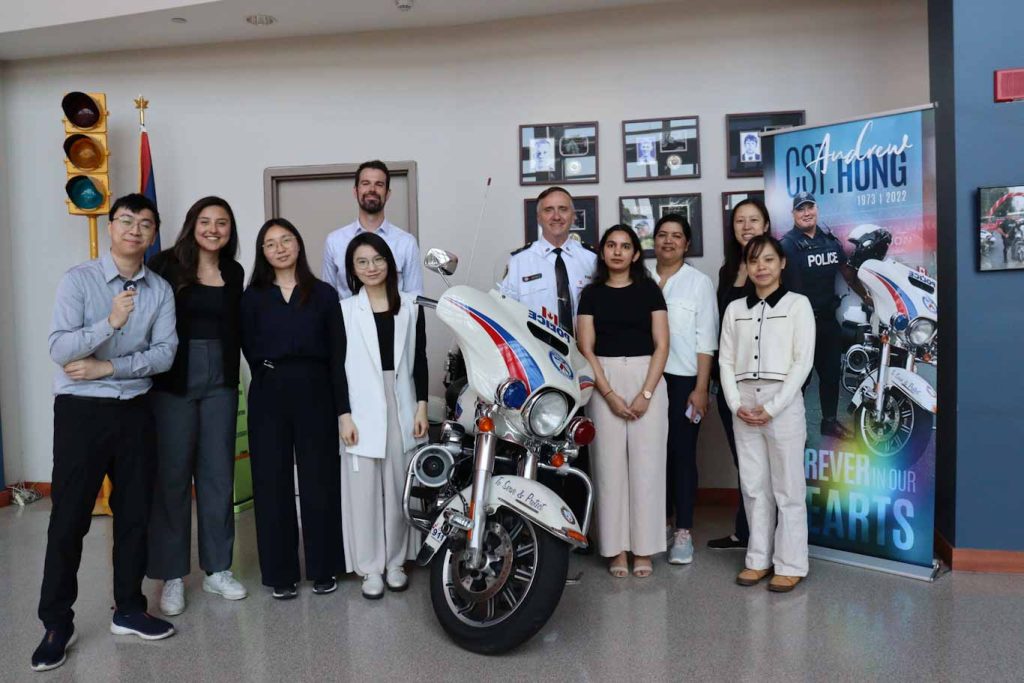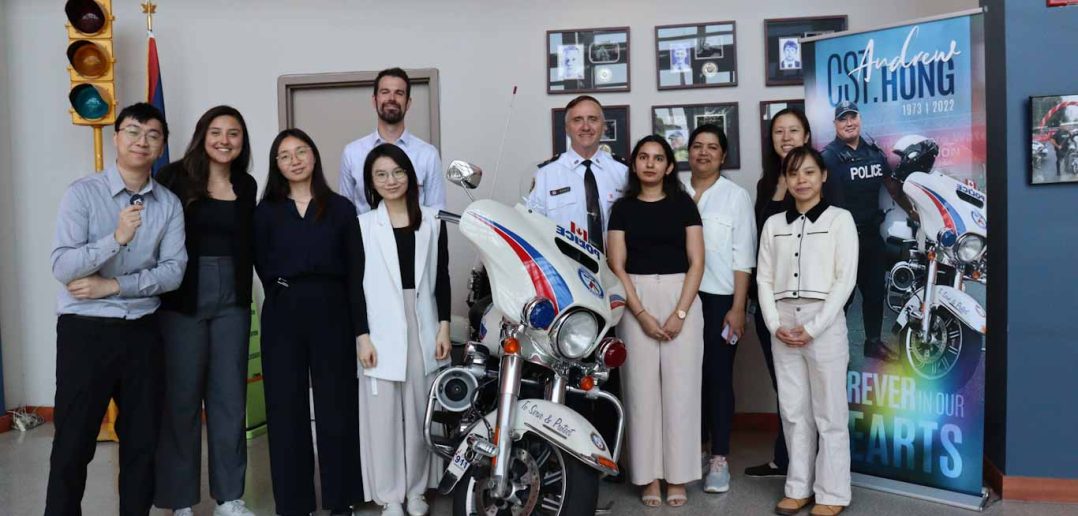Presentation skills are an often-overlooked tool in the data scientist's box, and there's nothing like a room full of police to drive home the message that not everyone is a data geek.
Police officers have a more visceral job than data scientists. Formulae, algorithms and methodologies aren't relevant to their daily work. They need actionable information and need to understand what it means. So, presenting the results of a data science endeavor becomes crucial to successfully delivering the project's message.
“You have to be able to command a room,” says Toronto Police Services (TPS) Senior Analyst Daphne Choi. “When you help non-analytics people understand and put the data into a story, the impact is significant.”
Each year, the TPS Traffic Services division offers college students who are interested in data science careers the opportunity to tell their stories via the SAS Safe Roads Competition. Since 2019, dozens of teams have crunched TPS data with tools provided by SAS Institute Canada to reveal insights into Toronto traffic safety, and for the last two years, the winning teams were awarded the opportunity to present their findings to the division’s leadership directly.
This year's iteration of the competition crowned two winning teams who were invited to present their unique perspectives on road safety issues at TPS headquarters in Toronto.

Predicting traffic patterns and collisions
A joint team of students from Humber and George Brown Colleges focused on temporal patterns—daily and seasonally—of traffic collisions. Not surprisingly, December and January were peak months, accounting for more than 70 percent of collisions between them. The team attributed that to holiday volume, conditions and increased incidence of impaired driving. More surprising were a pair of midday humps—like lunchtime traffic—and a spike on Wednesdays in the earlier morning. But the highlight for officers was the dashboard-generated reports, which showed the facility to drill down into statistical patterns.
“I like the fact that you reinforced some basic ideas around what we talk about regularly. Accidents, time of day, time of month, where we need to be and when we need to be there,” said Matt Moyer, Acting Superintendent of Traffic Services for the TPS. “We don’t always get a chance to work through these messages in the communities and have officers in a position to reinforce this out there."
Creating safer roads for cyclists
A team from Seneca College focused on cycling safety—a contentious issue with somewhat strained relationships among police, community interest groups and the municipality. The group took on this specific aspect of road safety because of a traffic safety anomaly: Since 2019, overall collisions have fallen by 15 percent, while cycling collisions have skyrocketed by 60 percent.
The Seneca team also incorporated datasets from the municipality on ridership of the city's BikeShare program—which allows credit card rental of bicycles from stations around the city—and the network of cycling infrastructure. The story that emerged was one of a cycling network poorly integrated between east-west and north-south traffic, exacerbated by a lack of traffic controls.
The use of outside datasets—in the case of the first team, population trends and projects and neighbourhood profiles, for the second cycling-specific data—helps move past the built-in bias in reports. Data from reports can over-represent incident patterns based on what officers have already responded to. An outside perspective is helpful, Moyer said.
He pointed to a “puzzle-building” approach to the issues. “We're not chasing shiny objects anymore,” the superintendent said. Analytics is crucial to policing, he said, and “we can't do it just because.”
A career calling card
That storytelling ability, holding a diverse audience to rapt attention during a data science presentation, is also a career calling card. It can get you noticed by those who can be pivotal to success as a data scientist. In the case of Julia Chehab, that and some perfect timing launched her career with the Toronto Police Service. Chehab had been part of a team presenting at the 2023 Safe Roads competition. Her performance impressed Choi, who asked for a resume on the spot—just as Chehab was graduating and looking to enter the workforce.
“Julia was someone who commanded the room from the jump,” says Choi, and that was part of the reason her team from Humber College in Toronto won the 2023 competition.
Chehab and her team demonstrated another key trait of a data scientist: The ability to pivot when the data doesn't dovetail with a hypothesis. The team's project was originally to study the effect of Daylight Savings Time on traffic safety. By comparing data the week before, the week of, and the week after time changes, they had hoped to demonstrate the impact of DST on accident rates.
There wasn't any. Weather and lighting conditions, it turned out, had more of an impact than DST itself. However, the team discovered a correlation among the entities involved in collisions—types of vehicles, cyclists, pedestrians—in the TPS Killed or Seriously Injured (KSI) database. (Coincidentally, a team from Toronto's Centennial College reached the same conclusion about DST; its further investigation examined the types of intersections where collisions were most likely to occur.)
Humanizing data
Chehab works on various projects for TPS. She's tight-lipped about many because they involve very personal information about people, but she says she's been working quite a lot on missing persons. Humanizing the outcomes of business analytics is rewarding, she says.
“In business, you're working with dollars and cents,” she says. “Law enforcement works with people, often on the worst days of their lives.”
“We're often looking at large datasets from a 30,000-foot view, and when it comes to road safety, it's easy to forget that each row of data in a table is a person who went through a bad experience,” says Choi.
“It's important that data is humanized and a different perspective is shared. Personal stories and these types of competitions are an educational opportunity for us. And these events are avenues for people in analytics and we welcome people to apply and pursue those opportunities.”

